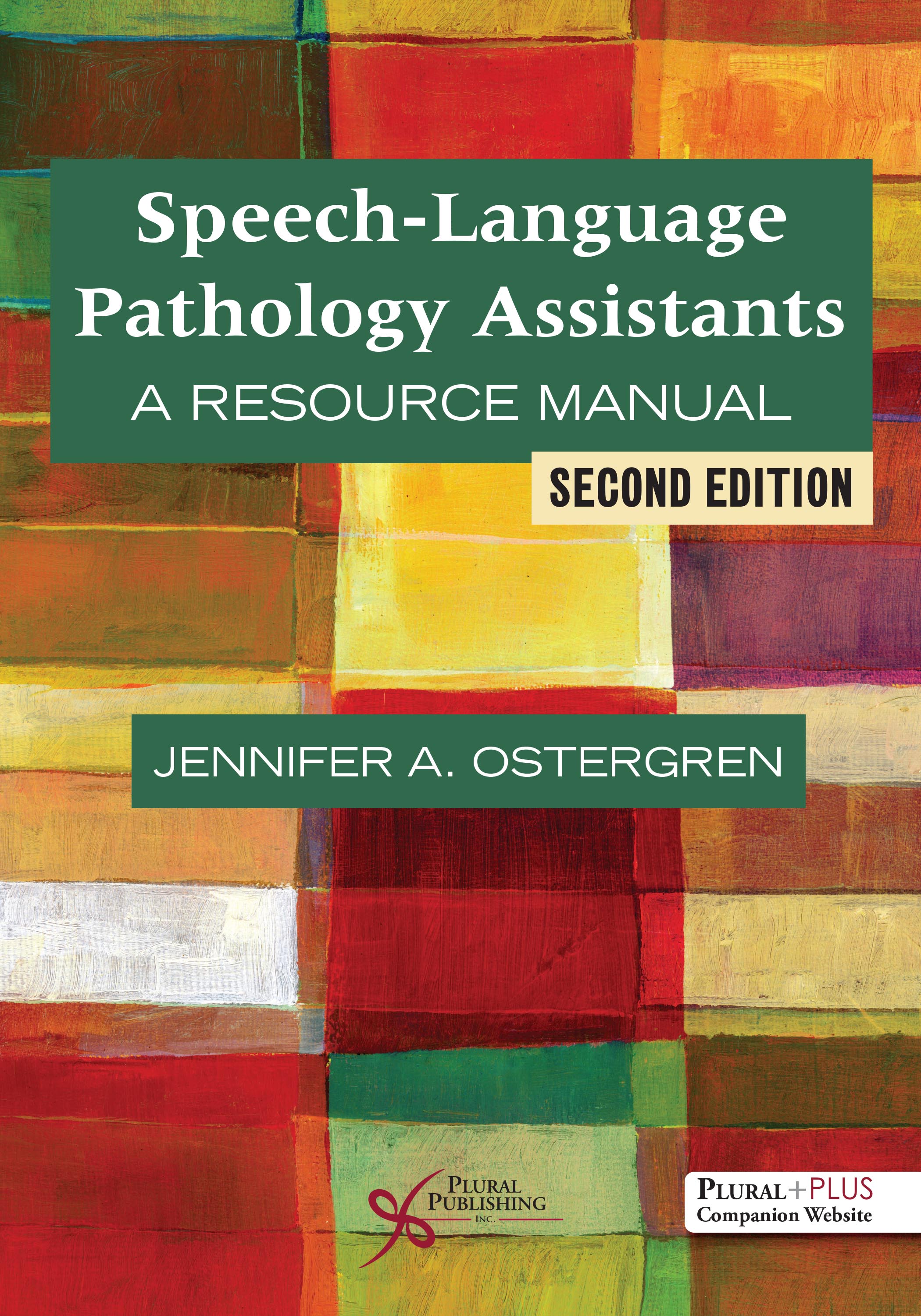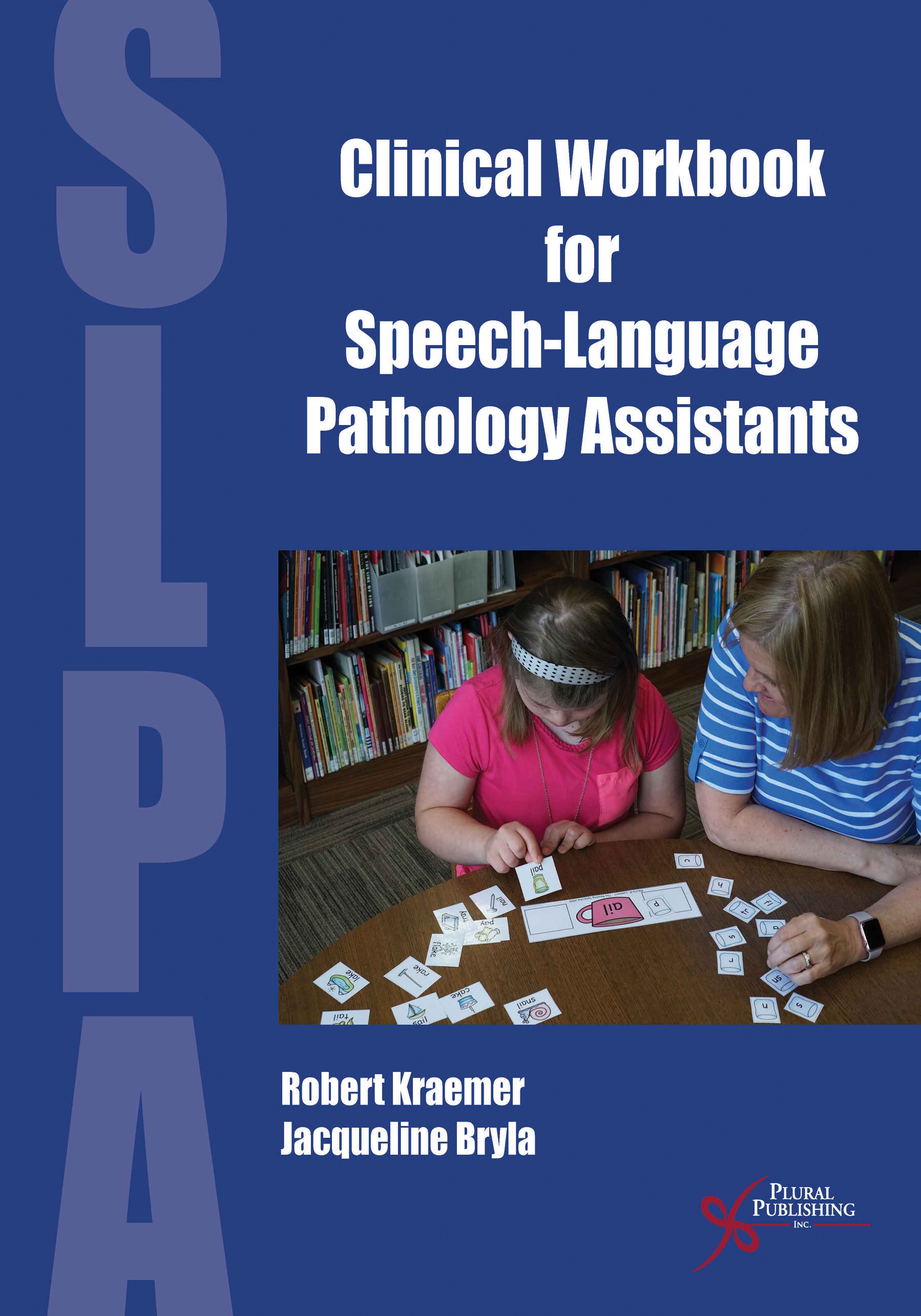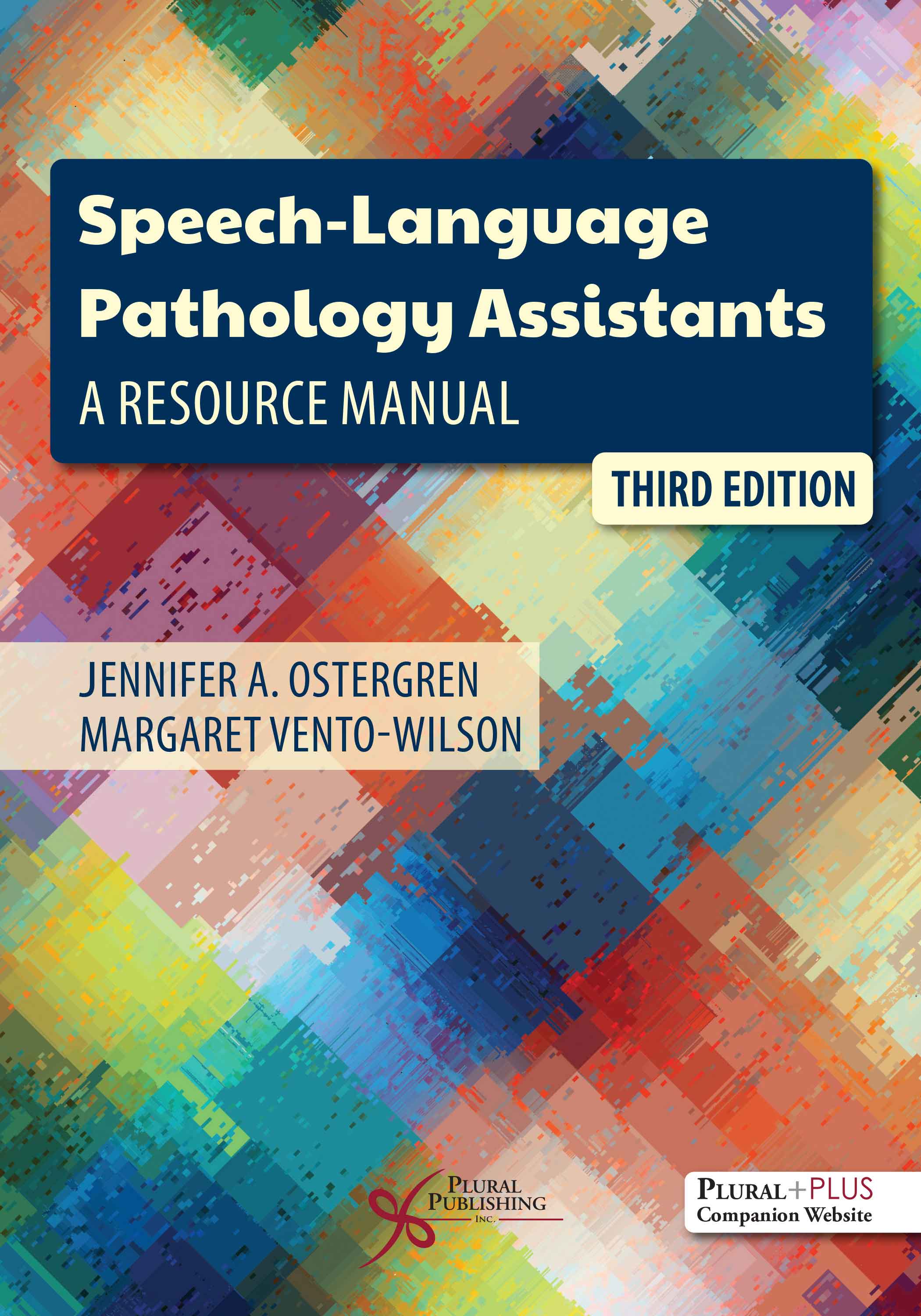
Speech-Language Pathology Assistants: A Resource Manual.
Second Edition
Jennifer A. Ostergren
Details: 561 pages, B&W, Softcover, 7" x 10" (A new edition is available.)
ISBN13: 978-1-94488-326-3
© 2020 | Available
A new edition of this text is available. For more information and to request an instructor exam copy, click here.
Written specifically with speech-language pathology assistants (SLPAs) in mind, Speech-Language Pathology Assistants: A Resource Manual, Second Edition, is a practical, easy-to-use manual that can be used by both SLPAs and SLPA educators. The text defines the roles of SLPAs and their supervisors —offering additional insight into the scope of practice of an SLPA per current American Speech-Language-Hearing Association (ASHA) recommendations—and includes discussions, strategies, and examples of real-world issues, such as using augmentative and alternative communication (AAC) and working with individuals with autism spectrum disorders (ASD). Also included within the chapters are "Things to Consider" sections, which address important factors and modifications that can enhance the effectiveness of treatment activities. For example, incorporating play, literacy, and speech sound remediation into treatment or modifying the clinical interface to enhance group therapy dynamics for children and adults.
Initial chapters are devoted to specific aspects of an SLPA's development, such as chapters on ways SLPAs can enhance clinical service through understanding of goals, lesson plans, data collection, and note-writing. Likewise, chapters on professional practice offer insight into ethical problem-solving, presenting a professional image, developing mentoring relationships, working with culturally and linguistically diverse populations, and the use of self-reflection for self-improvement. These chapters are followed by key principles for SLPAs to incorporate in clinical services provided to specific populations and disorders.
This second edition contains relevant updates in the field of speech-language pathology and recent research and references throughout. Included are additional "A Day in the Life" stories of actual SLPAs—their daily activities, rewards and challenges they face, and their words of wisdom to fellow SLPAs. New to this edition are four important chapters applicable to the work of an SLPA. This includes a chapter specific to behavioral principles and the use of positive behavioral supports and intervention (PBIS). New chapters were added in the areas of early intervention and the important topic of language intervention in children—both of which are highly pertinent to the roles of most SLPAs. A chapter was also added to address key principles in service provision for adults with neurologic disorders, including an overview of common treatment approaches for the disorders of aphasia, right hemisphere brain dysfunction (RHBD), cognitive-communicative disorders associated with TBI, apraxia of speech, and dysarthria. The second edition also contains access to a PluralPlus companion website with helpful appendices to support the material covered in the text, such as checklists, exercises, forms, and other clinical tools and resources specific to SLPAs.
Speech-Language Pathology Assistants: A Resource Manual, Second Edition is a key resource for enhancing skills and highlighting professional practice issues, for clinical practicum training or future employment. This is a text both SLPAs and SLPA educators will want to have on their bookshelves.
Preface
Acknowledgments
Contributors
Part I. Defining Roles: Speech-Language Pathology Assistants (SLPAs)
Chapter 1. Defining Roles: SLPAs
Chapter 2. Defining Roles: Supervision and Mentoring
Chapter 3. Ethical Conduct
Chapter 4. Professional Conduct
Chapter 5. Cultural and Linguistic Diversity
Carolyn Conway Madding
Chapter 6. Health and Safety
Pei-Fang Hung
Part II. Skills Development
Chapter 7. Deciphering Lesson Plans and Goals
Chapter 8. Data Collection
Chapter 9. Note Writing
Chapter 10. Implementing Treatment
Chapter 11. Using Behavioral Principles
Chapter 12. Group Therapy
Jennifer A. Ostergren and Sarah Guzzino-Herrick
Part III. Treatment for Specific Populations and Disorders
Chapter 13. Speech Sound Remediation
Lei Sun
Chapter 14. Early Intervention
Margaret Vento-Wilson
Chapter 15. Language Intervention for Children
Margaret Vento-Wilson
Chapter 16. Incorporating Play and Literacy in Treatment
Sara M. Aguilar
Chapter 17. Autism Spectrum Disorder (ASD)
Jodi Robledo
Chapter 18. Augmentative and Alternative Communication
Margaret Vento-Wilson
Chapter 19. Adults with Acquired Neurologic Disorders
Index
Purchasers of this book receive complimentary access to supplementary materials hosted on a Pluralplus companion website.
To access the materials, log in to the website using the URL and Access Code located inside the front cover of your copy of Speech-Language Pathology Assistants: A Resource Manual, Second Edition.

Clinical Workbook for Speech-Language Pathology Assistants
First Edition
Robert Kraemer, Jacqueline Bryla
Details: 278 pages, B&W, Spiral Bound, 8.5" x 11"
ISBN13: 978-1-59756-890-6
© 2018 | Available

Speech-Language Pathology Assistants: A Resource Manual
Third Edition
Jennifer A. Ostergren, Margaret Vento-Wilson
Details: 612 pages, B&W, Softcover, 7" x 10"
ISBN13: 978-1-63550-415-6
© 2024 | Available

